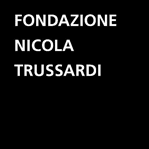Anri Sala
Long Sorrow
Circolo Filologico Milanese, Milan
November 15 - December 18, 2005
Project
Anri Sala’s films, photographs and videos explore the boundaries of history and geography, seen through the eyes of marginal characters who become accidental actors in collective dramas.
Mingling personal stories with studies of society, as metaphors for global conflicts, Sala’s videos are like frescos, epiphanies and visions that reveal unexpected, overlooked fragments of reality. The Albanian artist uses various techniques and genres in his films, ranging from documentary to fiction, music videos to narrative sequences, to unveil reality while narrating little existential explorations.
For the solo show organized by Fondazione Nicola Trussardi—his first with an Italian institution—Anri Sala presents Long Sorrow (2005), a film specially conceived and realized for the occasion, which lends its title to the entire exhibition.
Long Sorrow is a requiem for the end of dreams. Its protagonist is the famous free jazz saxophonist Jemeel Moondoc, who appears in a surreal scenario, hanging in mid-air outside the top-floor window of a building on the outskirts of Berlin, a classic architectural example of 1960s housing developments. Neighborhood residents have rebaptized this building “the long sorrow”, a nickname that becomes the title of Anri Sala’s film. In it, the African-American musician’s improvisations build a cathedral of sound, imbued with a sense of mounting tension. Part social documentary and part metaphor for artistic creation, Long Sorrow closes with the image of an airplane that seems to crash into the building.
Alongside Long Sorrow, Anri Sala presents an extensive selection of his video work and a number of photographs. Uomodomo (2001) is the portrait of a man wandering, half awake and half in a dream, through the arcades of Milan’s cathedral; in Time after Time (2003) the hesitation of a horse standing on a roadside in Tirana at night reveals the passage of cars as their headlights illuminate its movements. From the play of light and shadow in a nocturnal hunt by the sea in Ghostgames (2002), to the transformation of a cymbal into an absurd stroboscopic light in Three Minutes (2004), to quiet, melancholy visions of landing strips and old funfairs, Anri Sala’s pieces seem to flow past like faded frescoes of reality.
As a venue for presenting his work, Anri Sala chose the austere splendor of the Art Nouveau halls that house the Circolo Filologico Milanese, whose library is the setting for patient research and encounters between different languages and cultures. Founded in 1872, it is the oldest cultural association in the city, and one of the first in Italy. Established with the aim of “promoting and spreading culture, particularly the study of foreign languages and civilizations”, according to the first article of its charter, in 1875 its courses already included classes in French, English, German, Spanish, Hungarian, Modern Greek, Russian, Chinese, Arabic, and Hebrew. Its first home was a small flat rented for three years with funds voluntarily contributed by members; then it moved to Via Pellico, and finally, in 1908, to its current location in Via Clerici, a building in pure Art Nouveau style. From 1909 to 1920, the Circolo Filologico became the city’s main cultural center, its library housing over 100,000 volumes and 300 periodicals. Renowned intellectuals held seminars and lectures there, including Tatiana Tolstoy in 1926. World War II brusquely interrupted the life of the club when the building was bombed and part of its library destroyed. In 1947, its activities finally got back into full swing, and today its halls and library are still the site of intensive studies.
Anri Sala was born in 1974 in Tirana, Albania, and lives and works in Berlin. He has been exhibiting his work for many years, with solo shows at international institutions such as CAC Contemporary Arts Center in Cincinnati (2009), the Museum of Contemporary Art in North Miami, Florida (2008), Museum Boijmans van Beuningen in Rotterdam (2005), the Centre for Contemporary Art Ujazdowski Castle in Warsaw (2005), Museé d’Art moderne de la Ville de Paris (2004), the Art Institute of Chicago (2004), Kunstverein in Hamburg (2004), and Kunsthalle Wien in Vienna (2003). Shortlisted for the Preis der Nationalgalerie für Junge Kunst 2005 award in Berlin and the New York Guggenheim’s Hugo Boss Prize (2002), in 2001 Anri Sala won a Golden Lion for the Young Artist Prize at the Venice Biennale, where he exhibited on three consecutive occasions (2003, 2001 and 1999). The artist has also taken part in many group exhibitions and biennials, including the 2nd Moscow Biennale of Contemporary Art (2007), the 15th Biennale of Sydney (2006), the berlin biennale (2006 and 2001), the 8th International Istanbul Biennial (2003), the Tirana Biennale in Albania (2003 and 2001), the Yokohama Triennale (2001), Manifesta 4 in Frankfurt (2002) and Manifesta 3 in Ljubljana (2000).
- Trussardi 0022
- Trussardi 0059
- Trussardi 0003
- Trussardi 0035






























